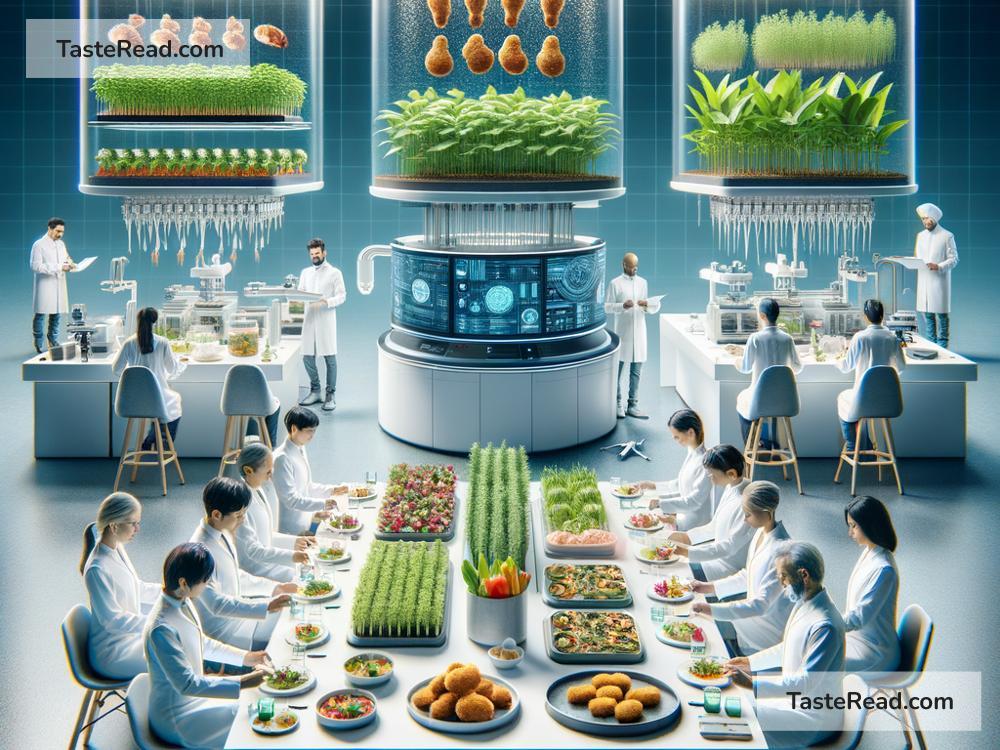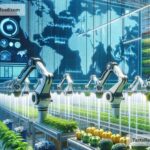The Future of Food and Global Sustainability: A New Way Forward
Food is an essential part of life. It nourishes us, connects us, and shapes culture and society. But as the world keeps growing—reaching nearly 8 billion people—the way we produce, distribute, and consume food needs to change. If we don’t, we risk harming the planet and facing shortages. What does the future of food look like? And how can it help create a sustainable world? Let’s explore these exciting possibilities.
The Challenge We Face
The world’s current food system is under pressure. Farming uses vast amounts of land and water, often leading to deforestation, soil erosion, and a loss of biodiversity. Additionally, the transportation of food contributes to greenhouse gas emissions that drive climate change. At the same time, millions of people still go hungry while others waste enormous amounts of food.
With the global population expected to reach 9.7 billion by 2050, we need to produce more food than ever before—but in a way that doesn’t harm the planet.
This is where innovative solutions and sustainable practices come in.
Smart Farming for a Better Future
One of the biggest changes in the future of food will come from smarter farming. Technology is giving farmers tools to grow better crops with fewer resources. For example:
-
Precision Agriculture: Farmers now use drones and sensors to monitor crops. These tools track soil health, water needs, and plant growth, allowing farmers to use just the right amount of water, fertilizer, and pesticides. This reduces waste and protects the environment.
-
Vertical Farming: Imagine a farm inside a tall building! Vertical farms use stacked layers to grow crops in cities, close to where people live. They use less land, water, and chemicals compared to traditional farms.
-
Genetically Modified (GM) Crops: Science can help crops become stronger. GM crops can grow in difficult conditions, resist pests, and produce more food. While some people worry about safety, experts say these crops could be vital in feeding the world sustainably.
Alternative Proteins: A New Way to Eat Meat
Meat production takes a heavy toll on the environment. Raising animals for food uses large amounts of land and water, and it produces methane, a greenhouse gas that contributes to global warming. As the world grows, we simply can’t rely on traditional meat production forever.
That’s where alternative proteins come in. These innovative solutions offer the taste and nutrition of meat without the environmental cost. Here are a few examples:
-
Plant-Based Meat: Companies are creating burgers, sausages, and nuggets from plants that taste like real meat. These products use less water and land compared to livestock farming.
-
Lab-Grown Meat: Scientists can now grow meat in labs from animal cells. It’s real meat, but without the need to raise and slaughter animals. While still expensive, lab-grown meat could soon become affordable and accessible.
-
Insects: Many cultures have eaten insects for centuries—they’re packed with protein and require far fewer resources to farm than livestock. Crickets, mealworms, and other insects might become part of the food future for more people.
Reducing Food Waste
One-third of all food produced globally ends up being wasted. That’s a huge problem because wasted food means wasted resources like water, energy, and labor. Reducing food waste will play a key role in building a sustainable food future.
Some possible solutions include:
- Better storage methods in farms and homes to prevent food from spoiling.
- Apps and technology that connect extra food with people who need it, such as food donation platforms.
- Encouraging consumers to buy and cook only what they need.
Even small changes, like composting leftovers or not throwing away slightly “ugly” produce, can make a big difference!
The Rise of Regenerative Agriculture
While traditional farming often damages the land, regenerative agriculture does the opposite—it heals the soil, restores ecosystems, and absorbs carbon from the air. Farmers practicing this method plant cover crops, rotate crops regularly, and avoid pesticides. This approach not only produces food but helps fight climate change. It’s a win-win for farmers and the planet!
Collaboration is Key
Creating a sustainable food future isn’t just up to farmers or scientists—it’s an effort that everyone needs to be part of. Governments can support eco-friendly policies and fund research for better food systems. Companies can commit to sustainable practices, such as reducing plastic packaging and supporting local farmers. And everyday people like you and me can make mindful choices, like eating less meat, buying local products, and reducing waste.
A Hopeful Vision for Tomorrow
The future of food holds many challenges, but it also brings hope. Technology, creativity, and collaboration are paving the way for systems that feed everyone while protecting the planet. As we move forward, it’s important to remember that small changes make big impacts. Whether it’s switching to plant-based meals, supporting sustainable brands, or cutting down on waste, we all have the power to contribute to a brighter, greener future.
By working together, we can build a food system that serves both humanity and the Earth. And in doing so, we create not just a sustainable world, but a better one for generations to come.


